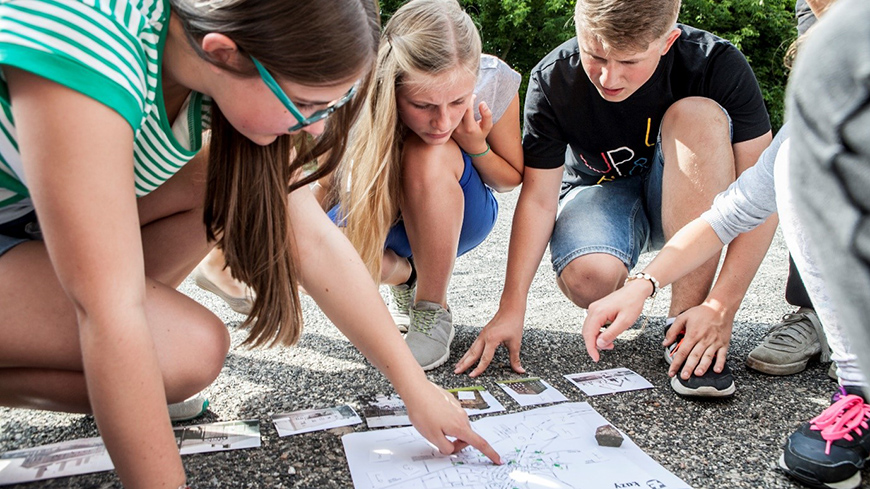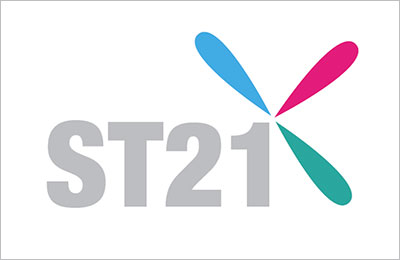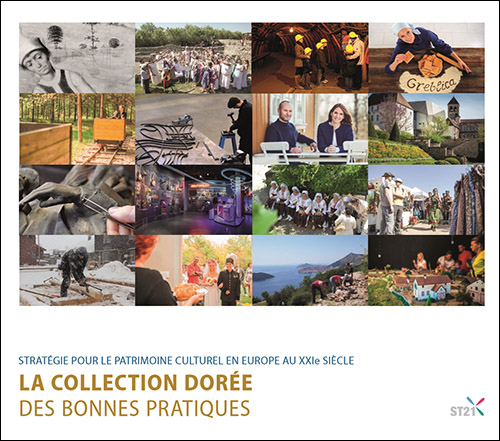Location of the initiative:

Initiator
Museum of the History of Polish Jews
Relation to Strategy 21 Recommendations:
Time span of the initiative:
Start date: 2014 / End date: 2018
Motivation / Methodology
The “Museum on Wheels” is an educational exhibition of the POLIN Museum of the History of Polish Jews, travelling in a glass pavilion, which visits small Polish towns where before the war Jews were an important part of the local community and traces of their presence are still visible today, being an important part of local heritage.
It is the only mobile educational project in Poland that brings closer the history of Polish Jews on such a large scale and restores and preserves the memory of the local Jewish community in the towns visited, involving local activists and institutional partners who have been working for years to promote Polish-Jewish dialogue. Local organizers of the project (called local coordinators) are selected in a competition in which they create, propose and then carry out a 3-day programme of educational events accompanying the exhibition in a given town.
Thus, the project consists of two basic elements: an exhibition closed in a travelling pavilion and accompanying events, different for each town.
The implemented programme of accompanying activities is always adjusted to the potential of the residents' involvement in joint educational activities and consulted at the stage of creation with various groups: teachers, employees of local cultural institutions and municipal authorities. The programme includes workshops, walks, town games and bicycle trips following the footsteps of the local Jewish heritage. Thanks to their participation in the accompanying events, the residents began to perceive the Jewish past of the town as a multidimensional and lasting phenomenon.
The exhibition itself allows one to experience the history and feel the atmosphere of that world: a three-dimensional Polish-Jewish model brings closer the most important places of a typical shtetl, while fragments of statements by young Polish Jews allow to answer the following questions: “Who is a Jew?” and “What does it mean to be a Polish Jew today?”. The timetable presents the most important events in the history of Polish Jews, and thanks to the quotations from pre-war diaries, visitors learn more about the three languages of Polish Jews - Polish, Yiddish and Hebrew. For the youngest audience there is a workbench where children can touch Judaica and write their name in Hebrew. Thanks to the constant presence of educators travelling with the “Museum on Wheels”, visitors receive information about Jewish culture and answers to questions about Polish-Jewish relations.
In the “Museum on Wheels” we are not afraid to use modern technologies in the service of heritage: the heart of the exhibition is an interactive map, specially prepared for each of the towns visited. The map contains several points related to Jewish history, including institutions of social and religious life, service establishments, businesses, as well as places of martyrdom and post-war commemoration. Thanks to the map, younger residents get to know the history of their town better and older residents share their memories of their former Jewish neighbours. Visitors look at the map of their town and say, “oh look, this is where grandma lives”, “this is our house”, “I was born here”.
The most important goal of the project is to popularize knowledge about the Jewish cultural heritage outside large urban centres, for example, by arousing interest and increasing the knowledge of participants about the multicultural history of their towns. We believe that through joint participation in the events we make it possible to increase the level of social integration, openness and activation of residents. By visiting smaller towns, we also want to reduce the barriers to accessing culture and modern education and build partnership relations with people and institutions from all over Poland.
Obstacles / Barriers
1. Money does not bring happiness, but... it makes it easier to implement projects on such a large scale. The cost of visit of the “Museum on Wheels” in one town is approx. 10,000 euros. These are the funds needed for renting an exhibition pavilion, providing transport and exhibition service, cover the costs of accompanying events and workshop materials and provide remuneration for educators and local coordinators. The POLIN Museum has always managed to raise external funds for the project: money from private donors (for 10 towns) and funds from the Norwegian Grant as part of the Jewish Cultural Heritage project, which enabled us to visit over 70 towns. Without external funds, the project would not have been possible.
2. The local authorities are not always favourable: although in the vast majority we received a warm welcome and help from the local authorities, there were two situations where officials blocked the arrival of the “Museum on Wheels”, due to the approaching date of the local elections. Without the consent and invitation of the local authorities we do not have a guarantee of, for example, a good location of our exhibition on the city square, in a park or school grounds. The visible, central location of the exhibition has always ensured high attendance.
3. Sometimes it is simply too late: there are still many traces of Jewish heritage in most of the towns: a Jewish cemetery, where matzevot have been preserved, a former mikveh building, which now houses a community centre or a police station. These are places where we can base our story and where the residents can see the local heritage more easily. Unfortunately, in some towns there is nothing left: the synagogue was destroyed during the war, Jewish houses were demolished when the market square underwent a thorough revitalization after 1989. Then we have to use archival photographs, fragments of memoirs and scientific studies. All of the above can be found on the Virtual Shtetl portal, which is also one of the POLIN Museum resources.
Change / Impact
1. Increasing the quality of life by reducing barriers to access to culture and education: the project was created, inter alia, for residents of smaller towns, for whom a visit to Warsaw is still an expensive and time-consuming undertaking and the cultural offer in their places of residence is not sufficiently developed: very often there is no cinema or museum, and the offer of the community centre is inadequate to the needs of residents; The “Museum on Wheels”, located in the centre of the town, for 3 days becomes an urban agora - a place of exchange of thoughts and experiences, a cultural centre, a local museum and a playroom for the youngest audience;
2. Increased importance of local heritage in the eyes of residents and local authorities: after a visit to the “Museum on Wheels” many residents start to take an interest in the local heritage, recognizing its potential, for example, in promoting the city. Local history, so far unrecognized and interesting only to a few, becomes a source of pride and an object of in-depth research. An important fact, from the perspective of the POLIN Museum, is that the visit of the “Museum on Wheels” means that the local Jewish heritage - both tangible and intangible - starts to be treated as an integral part of the city's history: Jewish cemeteries are cleaned with greater regularity, Judaica is introduced in the city's halls of remembrance, and references about the rich pre-war Jewish life appear in the “history of the city” section of the local authorities' websites.
3. Increasing knowledge about the history and traditions of Polish Jews: Thanks to workshops, walks, lectures and other educational forms accompanying the “Museum on Wheels” visit, the residents of the visited towns increase their knowledge of Jewish culture and traditions. They find out what a synagogue and a mikveh is, who studied in a yeshiva, why the Torah cannot be touched, what the Sabbath and Hanukkah is. Thanks to these encounters with Jewish culture, the world of Polish Jews becomes more comprehensible, closer and worth exploring;
4. Improving the competences of cultural and educational staff: Local coordinators at each stage of the project receive from the POLIN Museum modern educational tools, expert care and access to professional communication channels;
5. Networking local leaders: Thanks to the trainings and conferences organized in the POLIN Museum within the framework of the project, local leaders get to know each other and establish relations for the common exchange of good practices in the field of effective implementation of educational and cultural activities. Thanks to the project, local leaders, who often live hundreds of kilometres away from each other, learn from each other and share their experiences. Such meetings give local leaders the feeling that they are not alone in their actions;
6. Strengthening the credibility of local leaders in the eyes of the local authorities: a visit of the “Museum on Wheels” very often means that local leaders, who have been dealing with local Jewish heritage for years, are recognized by local authorities and perceived as important players on the local interest scene. Local coordinators, during the evaluation and the conference organized at the end, say that since the implementation of the joint project, their relations with the local authorities have changed: permissions are issued more quickly, representatives of the authorities start appearing at events organized by the coordinators, they start to receive local government micro-grants for the implementation of activities;
7. Universalization of the meaning of Jewish heritage: The “Museum on Wheels” is part of the mission of the POLIN Museum by spreading the idea that the experiences and lessons learned from the history of Polish Jews are still prevailing and important in perceiving local history as a source of inspiration for educational activities and creating attitudes of tolerance towards people of different religions and cultures;
Evaluation studies show that the “Museum on Wheels” promotes knowledge about local history in an innovative and accessible way, encourages residents to act for the protection of Jewish heritage and brings together local activists.
Lessons learned
1. Be empathic: The POLIN Museum opened to the public in 2013. The building in which it is located is a showcase of modern Warsaw and its visitors come from all over the world. However, we are aware that many people living in Polish towns and villages will never come to visit us: the journey is time consuming, and not everyone can afford the stay of the whole family in the capital. That is why the Museum decided to visit them: since 2014, the “Museum on Wheels” has visited over 80 small towns scattered throughout Poland, it is not without reason that it is called a museum that reaches out to people.
2. Be flexible: The exhibition, which travels in the “Museum on Wheels” is permanent, only the interactive map changes depending on the location. However, we make exceptions: on the aforementioned model of a Polish-Jewish town, apart from the synagogue, there is a Catholic church (92% of the Polish population is Catholic). For example, a local coordinator of one of the towns pointed out to us that in her town most of the inhabitants were Orthodox and could feel affected by the narrative we propose. That is why we designed and printed on a 3D printer a model of an Orthodox church, which we placed on our model. This gesture was warmly welcomed and won the sympathy of our visitors.
3. Make friends with your local opinion leader: The “Museum on Wheels” never comes to a town on its own initiative, it is always invited by local leaders with the approval of local authorities. In order to attract the widest possible audience, we also try to reach and engage the local opinion leader. It could be a parish priest who will encourage parishioners to visit the exhibition during the mass, or a journalist who will recommend it in the local newspaper. The leader of the opinion can be anyone: an elderly resident whose opinion is important for others, or the owner of a shop where people come to shop. Try to involve them in the planning process.
Anchor the activities in a local context: Each town is different; each town has its own interesting history and local specifics. Try to approach them individually and adapt your offer to them. When visiting Knyszyn - a small town in Podlasie - in the local activities we put emphasis on a forgotten local delicacy - knysza from which the name of the town comes. Thanks to Jewish immigrants to the USA, knysza has become more recognizable overseas than in Poland. Through local activities, we wanted to restore the memory not only of local culinary traditions, but above all of the region's multicultural history.
4. Be prepared that not everything always ends up successfully: Polish-Jewish history is often a difficult topic and arouses heated discussions. It happens that Judeo-sceptics or simply anti-Semites come to the exhibition and accompanying events. Experience has taught us that engaging in long discussions does not bring any good and very rarely affects a quick change of attitude of these people. It is a process that lasts for many years and that is why it is so important to support local dialogue leaders - they will stay in the town and organize activities that will perhaps help the unconvinced to change their mind.
5. Heritage can be fun! One of the most important elements of the exhibition is the part with the three languages used by Polish Jews: Polish, Hebrew and Yiddish. Yiddish, which was used by most Polish Jews before World War II, is especially important in our story. This language was so common that many words and phrases have passed into contemporary Polish. In order to make us aware of the presence of Yiddishism in modern language, we have designed coloured pencils that can be taken as a souvenir and which contain some of the words with a funny meaning: bachor (a brat, a naughty child), ślamazara (a weenie, a very slow person), and rejwach (noise) with their Yiddish notation. In this way, people begin to see the Jewish heritage as something close to them, still present.
Online resources
- https://www.facebook.com/polinmuseum/
- www.sztetl.org.pl
- www.sprawiedliwi.org.pl
- http://judaika.polin.pl/dmuseion
- www.warsze.polin.pl
Contact information
Contact person: Zofia Bojańczyk
Organisation: Museum of the History of Polish Jews
Email: [email protected]
Phone: +48 22 37 93 749
Website: www.polin.pl
Source of financing
Shared public/private financing





